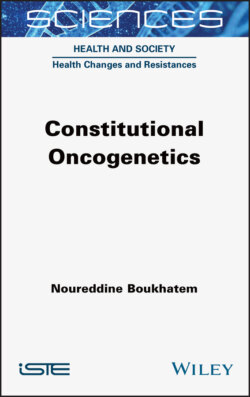Читать книгу Constitutional Oncogenetics - Noureddine Boukhatem - Страница 22
1.4.2. Ovaries
ОглавлениеIn terms of gynecological cancers, women with BRCA1 mutations have a 50% risk of developing ovarian, tubal or peritoneal carcinoma, while in BRCA2 carriers, the risk is about 25% for all ovarian cancer patients and about a quarter of patients with high-grade serous carcinoma (HGSC).
Carriers of BRCA mutations do not appear to have an increased risk of developing endometrial cancer, although there is some evidence to suggest that there may be an increased risk for serous/serous-like endometrial cancer.
BRCA1/2 carriers develop tumors that are almost always of high-grade serous histology, but the tumors may also be endometrioid and, more rarely, have clear cell histology.
Currently, there is a strong belief that the BRCA1/2 syndrome is almost exclusively associated with the histotype of ovarian cancer: HGSC.
Primary site histological features that have been found to be more common in HGSCs associated with BRCA1 (germinal or somatic) mutations include a solid, pseudo-endometrioid, transitional appearance (SET) , increased numbers of tumor infiltrating lymphocytes (TIL), and higher mitotic index and necrosis.
BRCA2 mutations have also been associated with an increased risk of developing pancreatic and prostate cancer.
Table 1.1. Spectrum of cancers in carriers of BRCA1 and BRCA2 pathogenic variants
| Cancer sites | BRCA1 | BRCA2 | ||
| Weight of evidence | Absolute risk magnitude | Weight of evidence | Absolute risk magnitude | |
| Breast (female) | +++ | High | +++ | High |
| Ovary, fallopian tubes, peritoneum | +++ | High | +++ | Moderate |
| Breast (male) | + | Not defined | +++ | Low |
| Pancreas | ++ | Very low | +++ | Low |
| Prostate | + | Not defined | +++ | High |
Figure 1.1. Familial pancreatic cancer in a syndromic context; identification of a mutation in the BRCA2 gene in the index case (indicated by an arrow). For a color version of this figure, see www.iste.co.uk/boukhatem/oncogenetics.zip
Figure 1.2. BRCA2 mutations are associated with breast and ovarian cancer, but also increase the risk of prostate cancer in men
Other genes in the BRCA1/2 pathway (repair of double-stranded DNA breaks) have also been implicated in hereditary ovarian cancer; in particular, mutations in RAD51C, RAD51D and BRIP1 confer ~10% increased risk of ovarian cancer.
Studies have identified RAD51C, RAD51D, BRIP1 and FANCM as likely susceptibility genes, particularly for the high-grade serous ovarian carcinoma (HGSOC) histotype (high-grade epithelial tumors of the serous and endometrioid subtypes). In a subset of 10 families carrying RAD51C deleterious mutations, ovarian carcinomas histotypes were as follows: (56%), low-grade serous carcinoma (LGSC) (11%), high-grade endometrioid (11%) and unclassified (22%).
Deleterious mutations in the gene are associated with a moderate increase in the risk of epithelial ovarian cancer (EOC). The relative risks associated with BRIP1 mutations have been estimated to be 11.22 for invasive EOC and 14.09 for high-grade serous.
